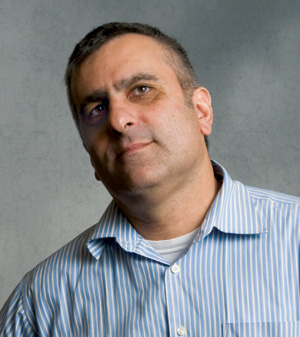From Mind to Market: Nader Amir
A software solution for anxiety

“I don’t want to go to this meeting. I won’t have anything intelligent to say. And even if I do, my voice will get all thin and shaky. I’ll humiliate myself and end up looking like an idiot.”
Just a little peek there into a mind plagued by social anxiety disorder, a crippling form of shyness. Who wouldn’t want relief from such nonstop negativity? Pharmaceutical companies offer one approach to treatment, while psychologists point to the benefits of cognitive behavioral therapy. But drugs don’t work for everyone, and therapy takes time and money.
San Diego State associate professor of psychology Nader Amir, Ph.D., has come up with a new approach: a simple computer game. Played for only 10-15 minutes twice a week for eight weeks, it helps shift a person’s attention from negative thinking, which eases anxiety symptoms.
In Amir’s own words, “It sounds too simple to be true.” But after six years of testing at SDSU, in England and in Australia, research results indicate the approach works as well as medication or talk therapy.
As director of SDSU’s Center for Understanding & Treating Anxiety, Amir specializes in the study of anxiety disorders, focusing his research on finding effective interventions. The key, he believes, lies in what a person pays attention to.
“We have about 20 years of research showing that anxious people focus on the negative, so we know attention is a big factor,” he said. “The prevailing idea is that you can actually change this, as we try to do in therapy or with medication. But the notion that a computer program can change attentional bias is relatively new.”
The National Institute of Mental Health is bullish on Amir’s idea, supporting him with two grants thus far. He’s applied for Department of Defense funding to study the program’s effects on post-traumatic stress disorder, a common malady in war veterans. And he also works with patients suffering from general anxiety and obsessive-compulsive disorder.
Satisfied that his treatment approach works, Amir is now trying to answer three further questions. Can you determine in advance who’s going to respond to computer-based intervention? Can you augment the program’s effects by lengthening treatment time or combining it with medication or therapy? What’s the best way to disseminate this new treatment option to the public?
Seeing the potential value of a relatively brief, affordable and downloadable treatment for anxiety, SDSU’s Technology Transfer Office stepped in to answer the third question by helping Amir set up a private company to market his discovery.
Look for Amir’s fledgling firm, Cognitive Retraining Technologies, to launch public sales sometime this year.
Read more about how SDSU is taking research to market.



